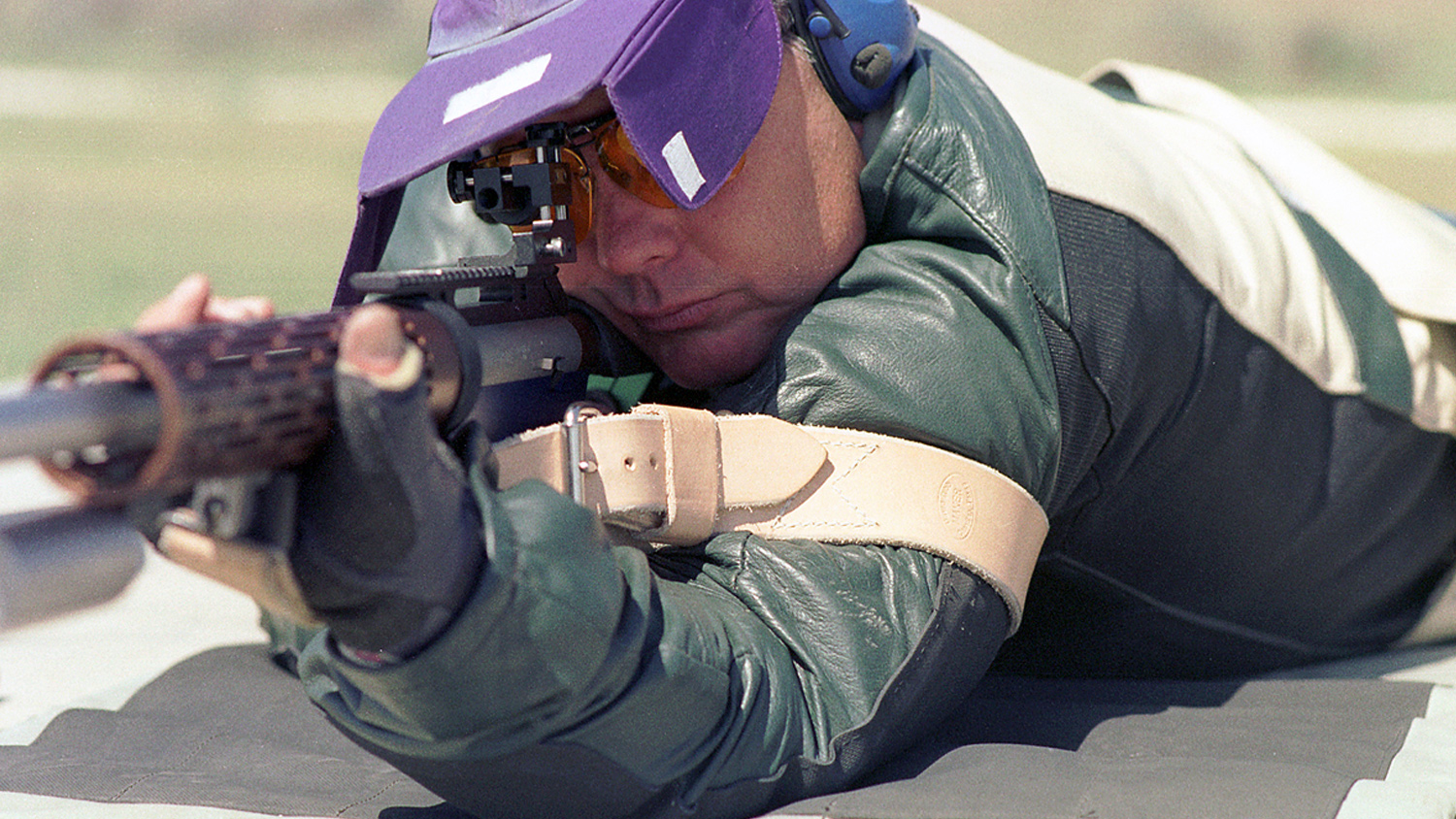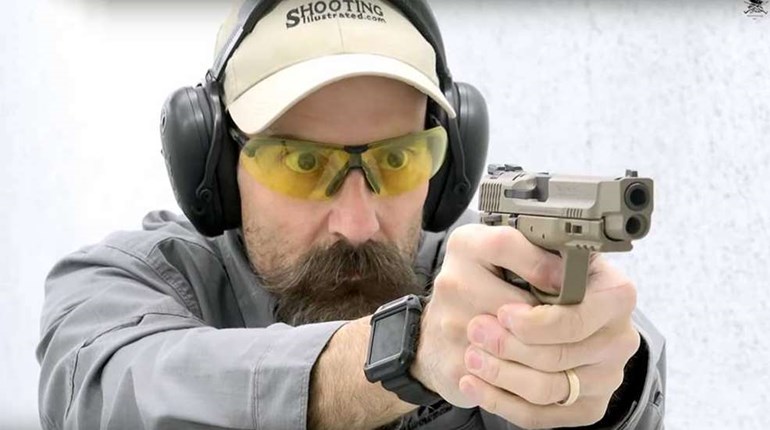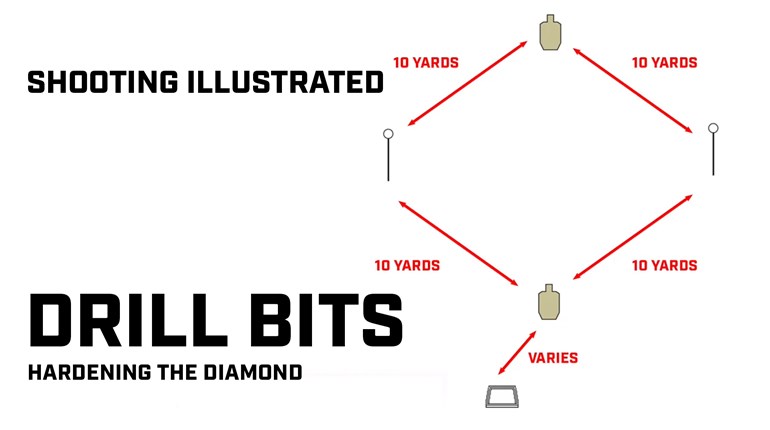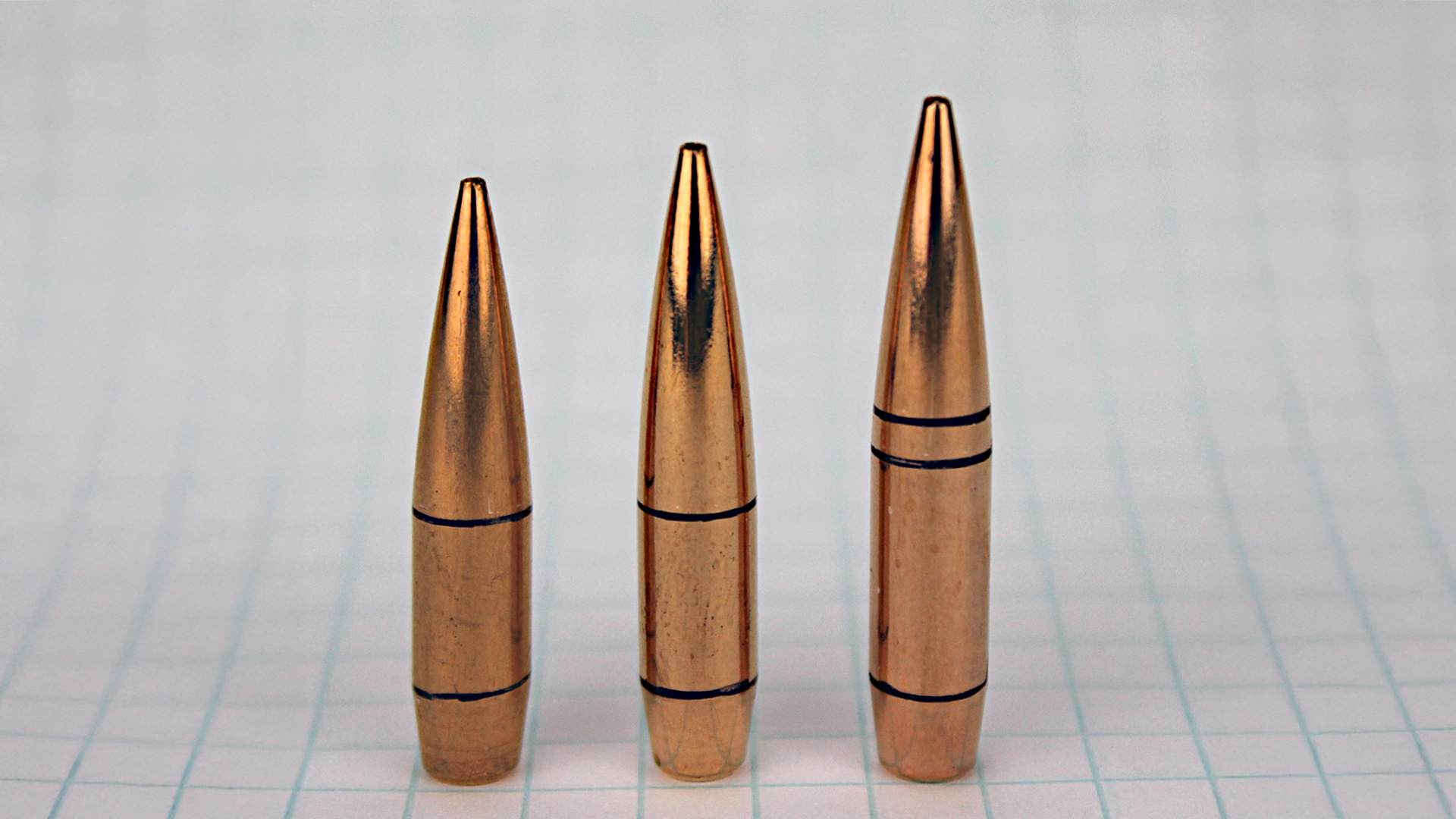
Note: Be sure to read the first and second parts of “Climbing the High Power Ladder.”
In a perfect world someone will be reading right along with this series and making the next step at the conclusion of each last installment. If that were so then I could now say, “Congratulations! You’ve become a pretty good shot.” Because you have: scoring 90 percent across the course goes far beyond luck.
But, there’s another 10 percent to go. I just had to mention that. The next five percent comes a bit easier than the “last” five percent. The next five percent is not that difficult if you focus on it, and that’s going to require a broad view as well as a narrow one. Allow me to explain.
Work on the areas that need the most help—those that are detracting from your score. As clear as that seems, it is more enjoyable to relish and rehearse those things you do the best. Adhering to a “systematic” approach is the “dedicated” part of attaining a Master classification goal. We need to collect more points, and these points no longer exist on any one target or any single event.

Moving from Expert to Master can be looked at as the distribution of lost points (again, a lost point is anything short of a 10). If you can avoid one point loss here, and another there, and a few more here and there, pretty soon you’re a Master. If that didn’t make sense, it’s not really 10s that help you so much, as it is eights that hurt you. All nines is 90 percent. That’s a 450/500 or a 720/800. Add three percent more 10s (15 or 24) and you’re there. That might sound like a lot. It’s not, not really. Again, it’s honestly not only scoring more 10s, it’s ditching the eights. If you’re scoring nines, you’ll also be scoring 10s. In my admittedly optimistic (but experience tells me correct) way of looking at it, the more nines you get, the more 10s come through too. Aiming stasis leans more inward than outward. With more and more practice, you’ll see that funneling the sight toward target center begins to eclipse letting it drift out. Pretty soon you feel like you should always be getting 10s. That’s what you’re shooting for, and that’s what you’re getting. The nine comes from a jiggle away from center, or a judgment hiccup, but the eight was already a nine that also drifted. Again, everything funnels inward.
The whole “mental” aspect of shooting is always a factor. People who say that doesn’t matter until later are, not to put too fine a point on it, wrong. It always matters to develop control, or at least containment, over temperament, to focus, handling anticipation, anger, and fear. You might see the need more as you’re moving beyond 90 percent scoring. That’s because things can get, well, a tad amount frustrating. A botched shot “feels” a lot worse because of the net effect it has on the score you’re trying to attain. That is because, as first said at the start of this series, your cone has narrowed. Shot dispersions are not nearly as wide. That’s why a “botched” shot isn’t necessarily a six or a seven, or even an eight.

Speaking of, part of becoming a Master is in knowing when not to shoot! Learning to cut your losses, not accept a shot you don’t want, is a strongly influential (albeit frustrating at times) part of scoring better. All shots score. There’s no “making up” for a point loss. Move ahead one shot at a time and don’t surrender points. It’s not negative thinking to see a nine as a point loss. It’s reality. You want all 10s. Of course you do. Following a lower scoring event or two at a tournament, as an Expert it’s possible to rally up a little bit and shoot to your classification, but you can’t do that as a Master.
This is all about focus and a dedication to see the sight picture you need to see on each and every shot. It’s attention. If that sounds too simple, it’s because there’s really no other answer, no “trick.” By now you know what to do and how to do it, so do it! Don’t accept less than what you can do—ever.
Speaking of sight picture: shoot for Xs prone; shoot for 10s short-line. Shooting for Xs standing is, in my experience, overall unproductive. Learn what a solid 10 “looks like” and break on every one you see. David Tubb told me that umpteen years ago, and it’s one of the keys to high offhand scores. The reason to shoot for “perfection” prone—only perfect sight pictures—is because that, in itself, refines this all-important position.
Backing out, breaking down, mounting back up and going again gets monotonous but determination (to fire only on acceptable sight pictures) and discipline (accepting and then ignoring the extra effort) is a skill to develop all by itself. Make yourself a promise and keep it. (Clearly all the preceding isn’t much including the prone events. Sight movement is the main issue and factor in scoring well on short line.)

In the process of defining and continually redefining your shooting positions, you’ll start to become a more efficient self-help machine. You’ll get more sensitive and intuitive about how to make adjustments on different days to maintain the position consistency you need because you’ll be that much more aware of the subtle nuances of your position: the “control” position.
As stated in the previous article, moving up the ladder isn’t solely up to you and that’s because you and your equipment are a team: the game can’t be played without it. It gets more important the farther you go to fine-tune each pertinent piece of it. No doubt, the reason is because there’s reason for each piece. A good kit makes a mighty difference in a shooter’s progress, and destination. Get good stuff, and get the right stuff. As suggested, it might take a while, and a significant investment to find that all the pieces suit you as best they can. Don’t neglect a change when there’s an option that will make a difference. From my own experience, I can tell you that something like changing coats can make a whopping difference. I can’t say the same for spotting scopes. Personal gear matters a lot. The more technical things can help, but they are mostly a matter of satisfaction, rather than the reward.

There is most decidedly a point where the rifle itself has to come on up to the top, as does its ammunition. By now, chances are pretty good that you have your personal gear pretty well settled on. Now, to address Ol’ Smokie.
High Master is a pretty tough shot, and it is entirely possible for an otherwise good Master never to step over that threshold unless there’s a truly good rifle/ammo combination to support him. It’s not all “math,” but shot group sizes that are smaller mean more shots in the center, and fewer “close” shots losing points. This is exactly right back to the start of this and the golf quote: “It’s the quality of the worst shot.”
“It’s all the shooter.” No, actually it’s not. Trading up to a truly premium barrel from something “good” can make all the difference. If your rifle groups even 1/2 minute of angle smaller, that’s bought room between the scoring lines. Again, this is not just math. True: Knowing the group size of a rifle, any one shot can land on either “edge” of the group’s circle, and that means, yes, a 10 could have been a nine, and vice versa. But a smaller circle is always better.

All any of us can ever ask for is to get all the points we hold for. That, in a nutshell, validates a great rifle and ammo combination. It won’t give you something you didn’t earn, but it also won’t take away something you did earn.
One last thing
To move forward from Master, become more defining and refining on pressures involved in the shooting position. Those are pressures you hold the rifle with, face against the stock, sling tension, buttplate positioning in the shoulder, and more. Wherever they exist, it does not matter that our rifles are bedded with zero flex and all the barrels are stress-relieved and free-floated. I'm here to tell you that varying pressures against the rifle result in varying impacts on target. If you don’t accept that, then spend some time with a bag-rested ISSF-type air rifle. Shooting a rifle that accurate at that close of a distance, I can change impact by changing gripping pressure. The reason is clear, and the solution is vague. The reason is that small differences in the flow of vibration waves influence rifle behavior. A heavier-recoiling rifle may be more influenced, or less, I don’t know. I do know it’s important to make pressures as constant and consistent as possible.
The difference between Master and High Master is a few points, here and there. Truthfully, it’s a few points everywhere, but it’s one point at a time; there are no more big points harvests. There’s 32 to harvest on an 80-shot course; that’s the difference between 93 and 97 percent. Don’t get all statistical on it, but that’s four points every 10 shots.



































